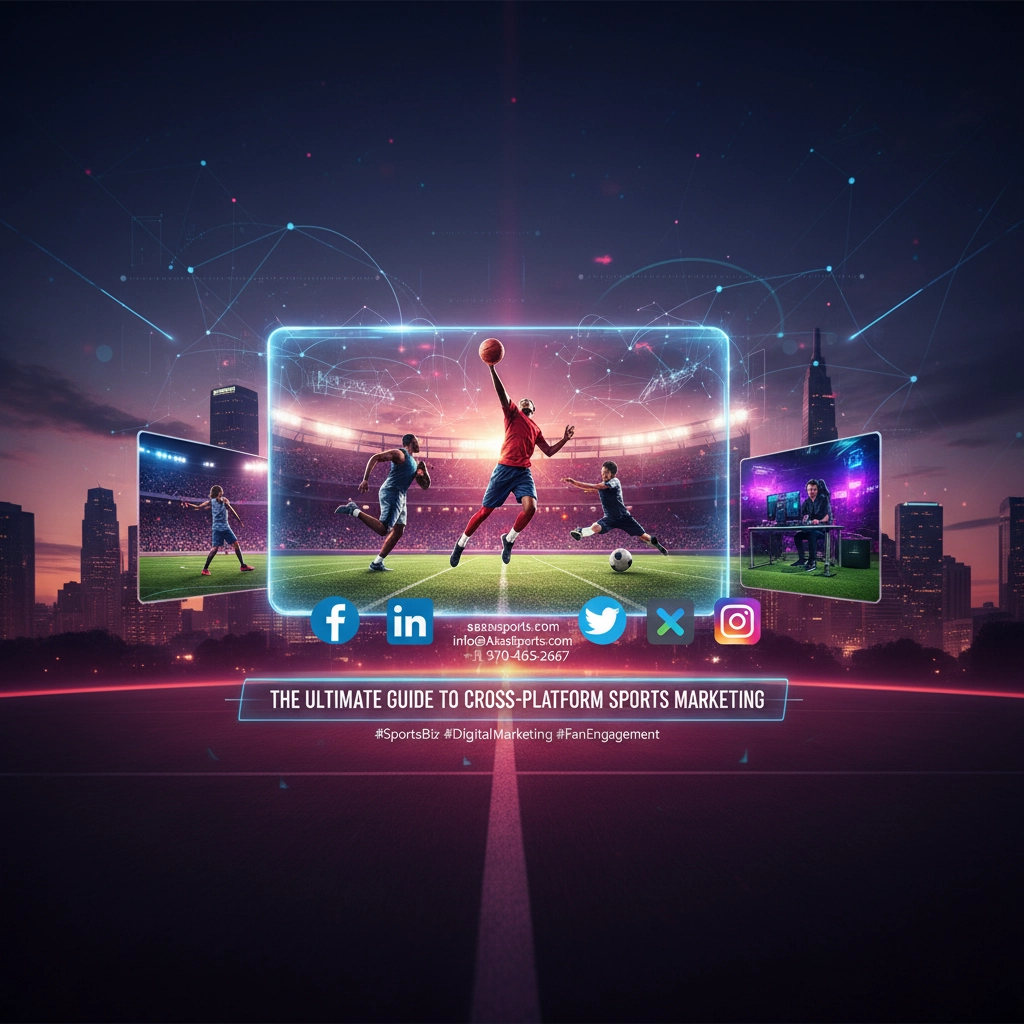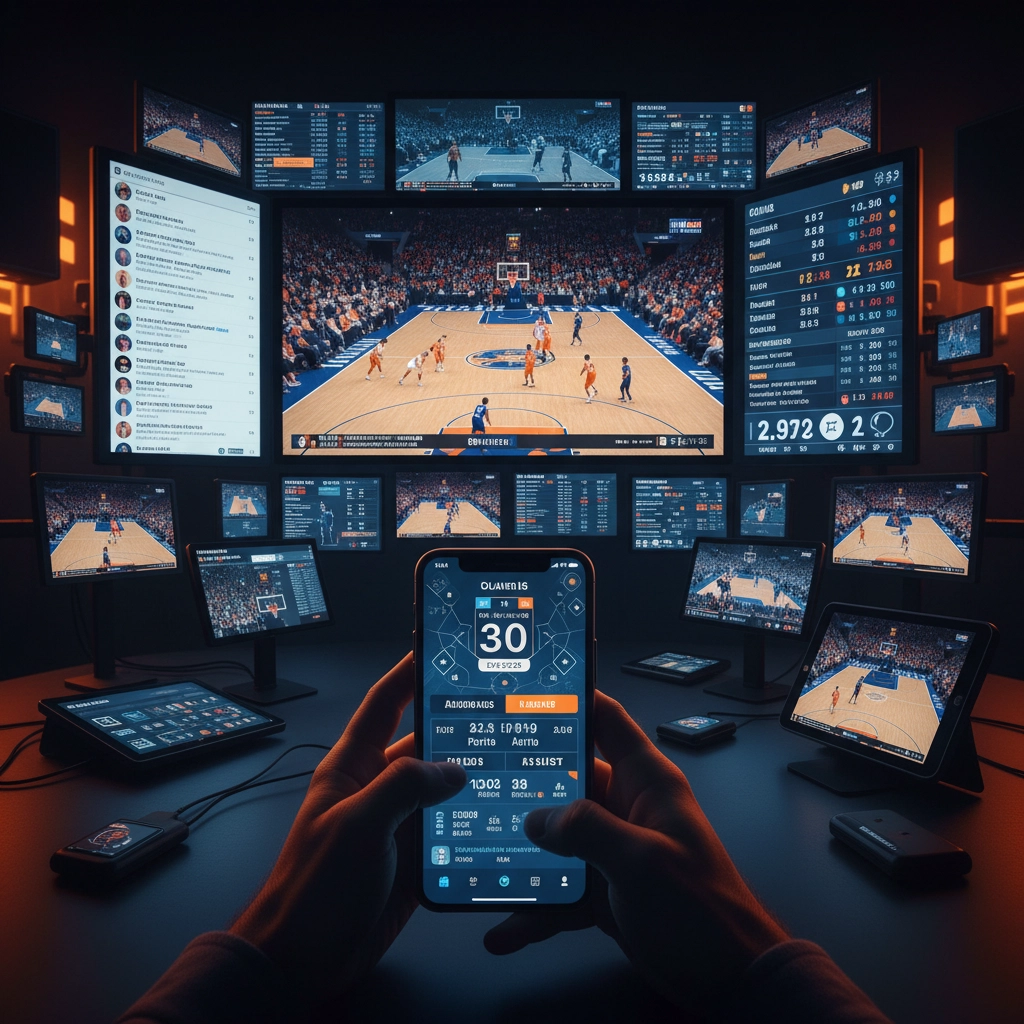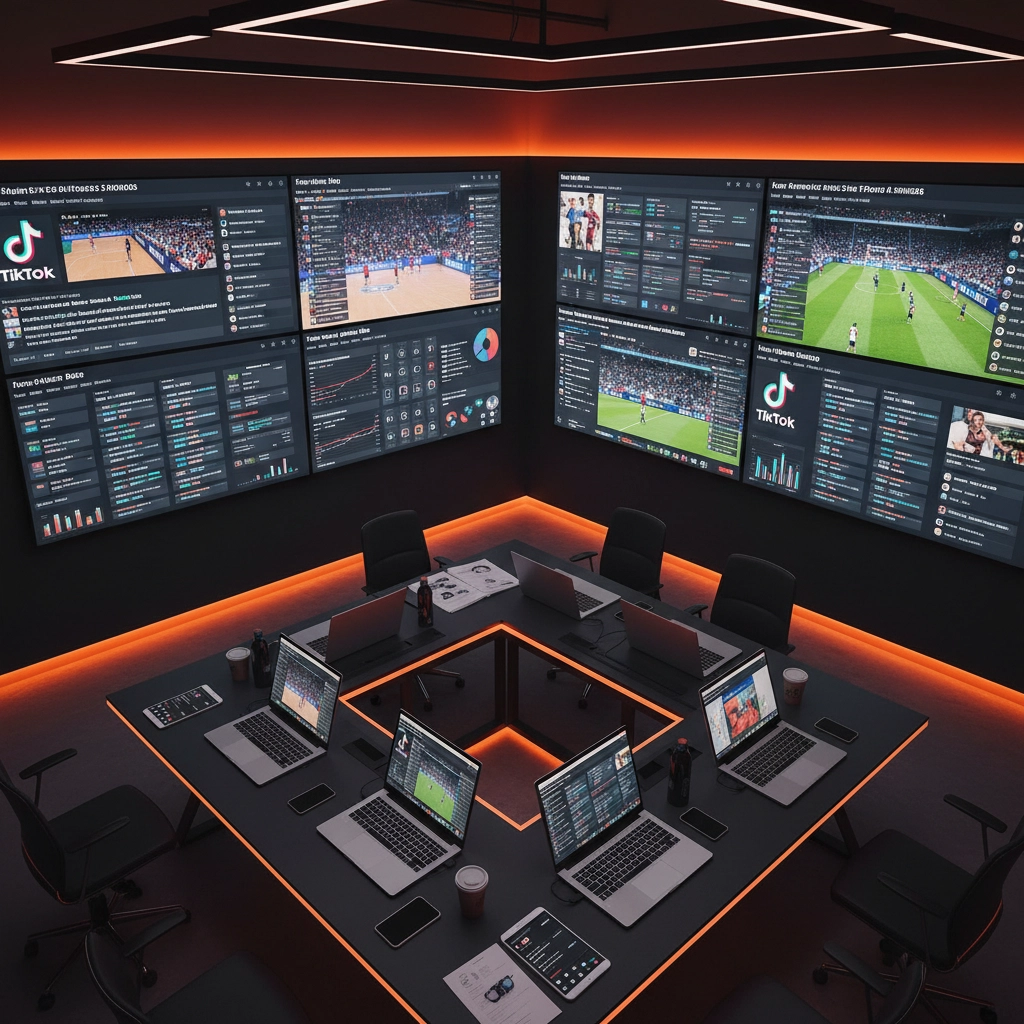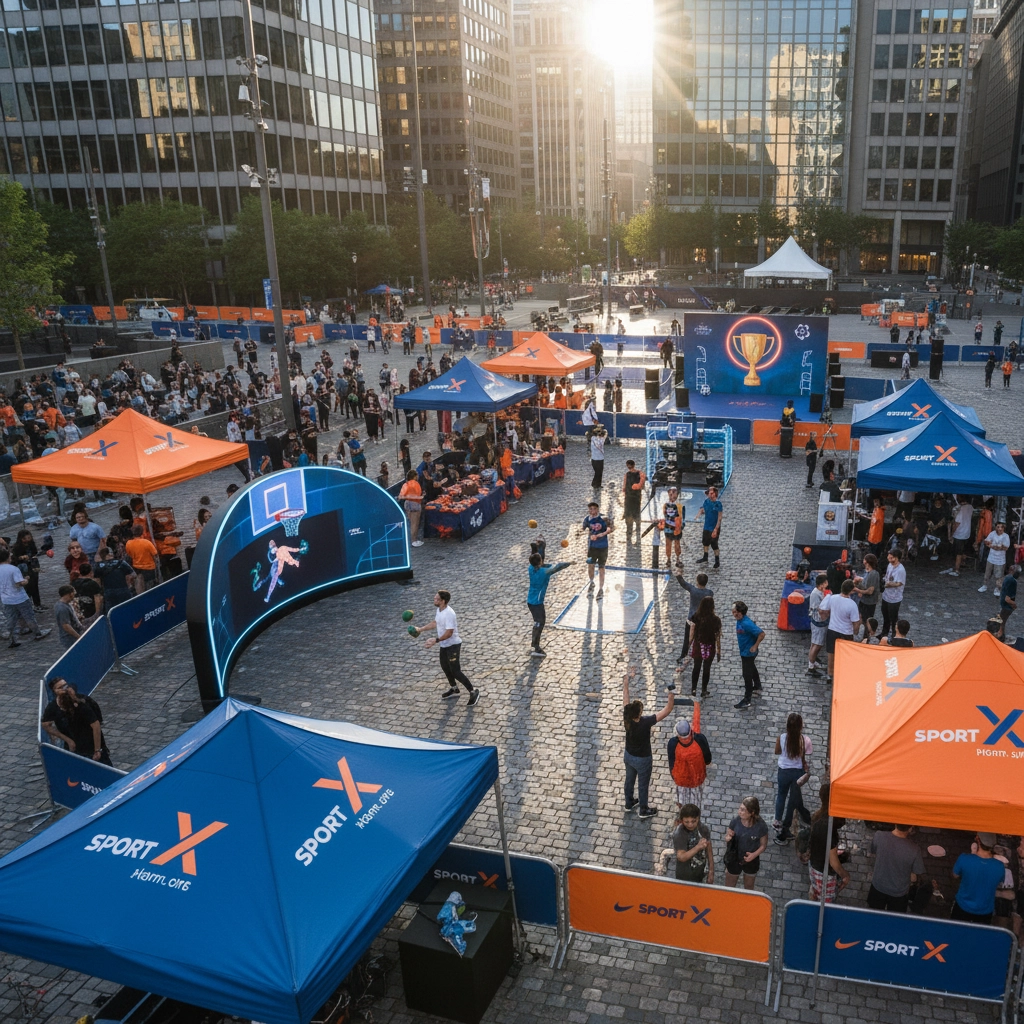
28 Oct The Ultimate Guide to Cross-Platform Sports Marketing: Everything You Need to Reach Fragmented Fan Audiences
Sports fans don't just watch games anymore: they live them across multiple screens, platforms, and devices simultaneously. While you're streaming the game on your TV, you're probably checking scores on your phone, debating plays on social media, and maybe even placing a live bet. This fragmented viewing behavior has completely changed how brands need to approach sports marketing.
The numbers don't lie: Over 80% of sports fans use a second screen during live broadcasts, and more than 105 million Americans watched live sports digitally in 2024. This shift means your old playbook of buying a TV spot and calling it a day won't cut it anymore.
Understanding the New Sports Marketing Landscape
Gone are the days when fans consumed sports content through a single channel. Today's sports audiences are scattered across streaming platforms, social media, mobile apps, and traditional broadcasts: often all at the same time. This creates what experts call the "war on attention," where brands must work harder than ever to break through the noise.
The opportunity is massive. Fans are more engaged than ever, but they expect brands to meet them wherever they are, with content that feels native to each platform. The brands winning this game aren't just advertising: they're becoming part of the sports experience itself.

Building Your Multi-Platform Content Strategy
Start with Platform-Specific Thinking
Each platform serves a different purpose in the fan journey. Your TikTok strategy should look nothing like your LinkedIn approach, yet both need to support your overall campaign goals. Here's how to think about it:
- TikTok/Instagram Reels: Quick hits, behind-the-scenes content, viral moments
- LinkedIn: B2B partnerships, corporate sponsorship announcements, thought leadership
- Facebook: Community building, longer-form content, local fan groups
- X (Twitter): Real-time game commentary, breaking news, fan debates
- YouTube: Long-form content, documentaries, tutorials, highlight reels
The key is creating a consistent brand narrative that adapts to each platform's strengths while driving fans toward your conversion goals: whether that's ticket sales, merchandise purchases, or brand awareness.
Mastering Social Media and Real-Time Engagement
Social Platforms Are the New Stadium
Sixty-three percent of fans scroll social media during games. They're not just watching: they're participating in a shared experience that extends far beyond the physical stadium. Smart brands don't just observe these conversations; they become active participants.
Real-time engagement strategies that work:
- Live-post during games with instant reactions and analysis
- Launch interactive polls and Q&As during commercial breaks
- Partner with influencers for authentic game-day content
- Create shareable moments that fans want to repost
The most successful campaigns spark cultural conversations that extend far beyond individual games. Think Nike x athlete partnerships that dominate social feeds for weeks, not just game day.

Leveraging Data for Precision Targeting
Beyond Spray-and-Pray Advertising
The fragmented sports landscape demands sophisticated data strategies. You can't afford to waste budget on fans who'll never convert. Instead, use precision targeting to reach specific segments based on viewing habits, location data, and engagement patterns.
Game-changing targeting capabilities:
- Geo-fencing to capture venue crowds and reach entire households
- Retargeting attendees of experiential activations
- Lookalike audiences based on your highest-value customers
- Cross-device attribution to track the full customer journey
Advanced attribution analysis reveals which touchpoints actually drive results versus just capturing demand that would happen anyway. This data foundation allows you to progressively optimize campaigns and prove ROI to stakeholders.
Building Fan Communities That Last
From Viewers to Brand Advocates
Today's fans want belonging, not just broadcasts. Creating tiered membership programs, local fan clubs, and user-generated content contests transforms casual viewers into passionate brand advocates.
Community-building tactics that drive results:
- Launch "Fan of the Game" programs with exclusive perks and social spotlights
- Run monthly UGC themes where winners get featured across official channels
- Create membership tiers with escalating benefits and access
- Build local fan club networks with regional meetups and watch parties
Research shows 88% of consumers trust recommendations from people they know, making UGC a powerful form of earned media that compounds your marketing results over time.

Year-Round Engagement Strategy
Don't Go Dark During Off-Season
The biggest mistake sports marketers make is treating their campaigns like seasons: turning on during games and going silent afterward. Brands that maintain year-round engagement see measurably higher spending during active seasons.
Off-season content that keeps fans engaged:
- Behind-the-scenes training content and player features
- Historical content about team milestones and legendary moments
- Fantasy sports integration and prediction contests
- Community spotlights and fan stories
Create content calendars with consistent touchpoints: "Monday Mic'd-Up," "Wednesday Workouts," and "Friday Feel-Good" programming that gives fans reasons to stay connected even when games aren't happening.
Content Discovery and Social SEO
Meet Fans Where They Search
Fans increasingly discover content on social video platforms rather than traditional search engines. Creating evergreen content about rules, team history, and player stories ensures your brand stays discoverable between games.
Optimization strategies that work:
- Use exact query keywords in titles and descriptions that reflect how fans actually search
- Create episode-style content that encourages binge-watching
- Standardize season-long hashtags for consistent discoverability
- Package hero content with strategic captions and clear calls-to-action
Every piece of content should be architected with intentional design that removes friction from the fan journey and guides viewers toward conversion points.
Strategic Partnerships That Multiply Reach
Co-Developed Audience Sharing
The most efficient partnerships create value for all parties involved. Creators bring authentic audiences and cultural relevance. Brands bring distribution capabilities and resources. Teams bring intellectual property and established fan bases.
Instead of forced sponsorships, co-develop content that feels native to each partner's audience: limited edition drops, documentary series, watch-along live streams, or social media challenges.
Partnership best practices:
- Map shared goals and define single shared KPIs upfront
- Create joint content calendars where all parties cross-promote
- Establish clear measurement criteria for success
- Build long-term relationships, not one-off transactions

Experiential Marketing in the Digital Age
Bringing Stadium Energy Everywhere
Not every fan can attend live games, but you can replicate that atmosphere through traveling pop-ups, watch parties, and interactive experiences that feed your broader digital strategy.
Hybrid activation ideas:
- Mobile skills stations and meet-and-greets in high-traffic areas
- Watch party pop-ups in non-traditional venues
- Interactive murals and photo opportunities
- Skills challenges with social sharing built-in
The critical insight: capture content on-site and publish within 24 hours, then retarget attendees with follow-up offers to convert one-time participants into ongoing fans.
Commerce Integration and Frictionless Purchasing
Remove Every Barrier to Fan Spending
Fans want to buy tickets, merchandise, and experiences seamlessly without jumping between platforms. The 44% of adults who bet on sports represent a substantial opportunity, especially during live games when emotions run high.
Commerce integration strategies:
- Embed purchasing opportunities throughout the fan journey
- Enable in-stream ticket sales and merchandise drops
- Integrate real-time betting and fantasy sports elements
- Create mobile-first checkout experiences with minimal friction
Every touchpoint should move fans closer to conversion while maintaining the authentic sports experience they expect.
Measuring Success and Optimizing Performance
Track Business Outcomes, Not Just Vanity Metrics
Multi-platform campaigns require sophisticated measurement to justify continued investment. Track ticket sales conversions, merchandise purchases, subscription signups, and lifetime customer value: not just impressions and clicks.
Key metrics that matter:
- Incremental revenue attribution across channels
- Customer acquisition cost by platform
- Lifetime value of acquired fans
- Cross-platform engagement and conversion rates
Use advanced incrementality analysis to understand which touchpoints actually drive results versus simply capturing demand that would occur anyway.
Ready to dominate the fragmented sports marketing landscape? The fans are out there, scattered across dozens of platforms and devices, waiting for brands bold enough to meet them everywhere they are.
The playing field has expanded dramatically, and the brands that master omnichannel sports marketing will own the attention economy for years to come.
Share this guide:
LinkedIn | Facebook | X | Instagram
Contact AAAA Sports: info@AaaaSports.com | +1 970-465-2667
Sponsored by Corporate America – Empowering businesses to reach fragmented audiences through innovative sports marketing solutions.
#SportsMarketing #CrossPlatformMarketing #DigitalMarketing #FanEngagement #SportsAdvertising #MarketingStrategy #SocialMediaMarketing #DataDrivenMarketing #SportsSponsorship #AAAASports

Sorry, the comment form is closed at this time.